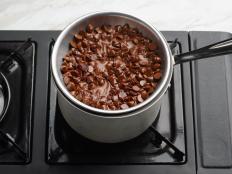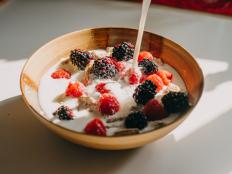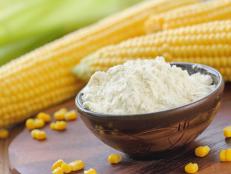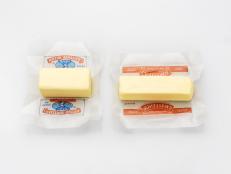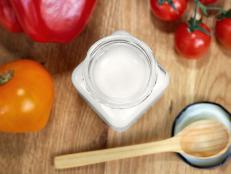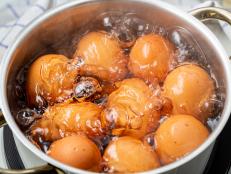What Is Cacao? A Chocolate-Maker Explains the Superfood
And how is it different from cocoa?
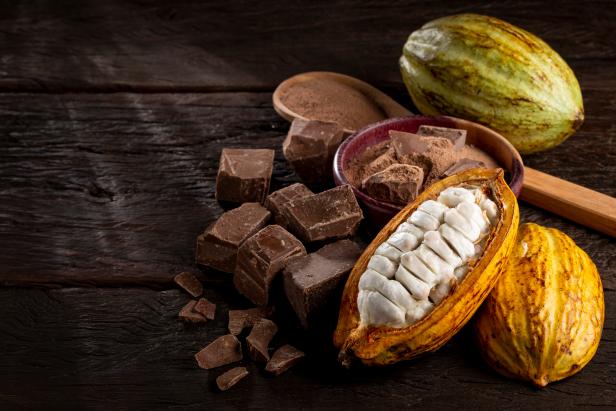
WS Studio/Getty Images
By Layla Khoury-Hanold for Food Network Kitchen
Layla Khoury-Hanold is a contributor at Food Network.
You might already know that cacao is a key ingredient in chocolate making, but what exactly is it? And what’s the difference between cacao and cocoa? For more info, we consulted Monica Rogan, founder, chocolate maker and CEO of Goodnow Farms Chocolate, and Fine Chocolate Industry Association (FCIA) board member.
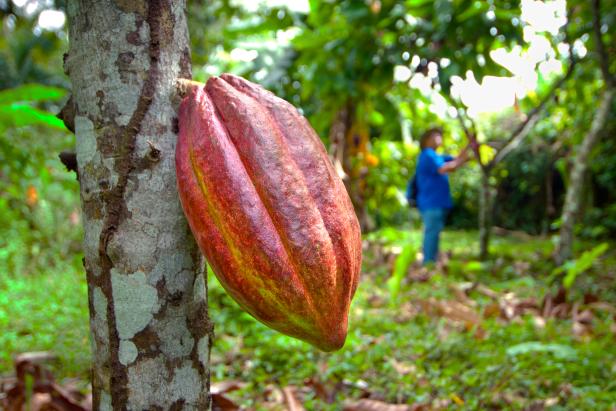
John Coletti/Getty Images
What’s Cacao?
Cacao is a tree (Theobroma Cacao) that grows in tropical regions along the equator and produces fruit; cacao also refers to the fruit’s seeds or beans. “Generally, cacao fruit looks like a small, football-shaped pod, and it grows on the trunk or large branches of the tree,” Rogan says. “The exterior of the fruit is called the pod, which acts as the fruit shell that protects the interior, fruit-covered seeds.” Depending on the type of cacao and its genetics, each pod can contain anywhere from 35 to 80 fruit-covered cacao seeds. “The exterior pod is hard, fibrous and dense like a melon rind. The interior fruit is sweet and moist with a gel-like texture, and it encapsulates each seed,” Rogan says.
Once the cacao farmers harvest cacao beans from their pods, they ferment them to develop the flavor. When the beans’ temperature rises above 118 degrees F, the beans are dried, bagged and shipped to chocolate makers like Rogan. Upon receipt, the beans are hand-sorted for the single-origin batch they’re making and brought to the kitchen to roast in small batches in their drum roaster. “Roasting is a critical step in developing flavor because it transforms the beans’ flavor precursors into actual flavor,” Rogan explains. “Since each cacao bean origin is unique regarding genetics and terroir and post-harvest processing, we’ve developed unique roast profiles for each one. Just like coffee and wine, different origins of cacao have different natural flavor notes that we want to highlight.”
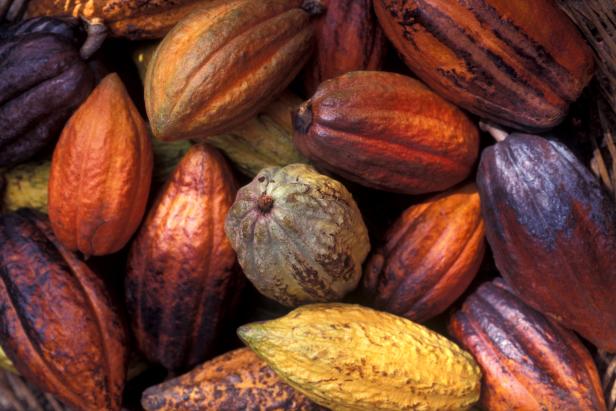
Jeremy Horner/Getty Images
Is Cacao a Superfood?
Cacao is considered a superfood—it’s loaded with antioxidants and contains notable amounts of iron, calcium and magnesium. Cacao is also a good source of flavonoids, which is purportedly beneficial for cardiovascular health (and one of the reasons dark chocolate is considered healthful), as well as theobromine, which is said to be a mood- and energy-booster.
Pronunciation of Cacao
“Cacao is pronounced “kuh-KOW," Rogan says.
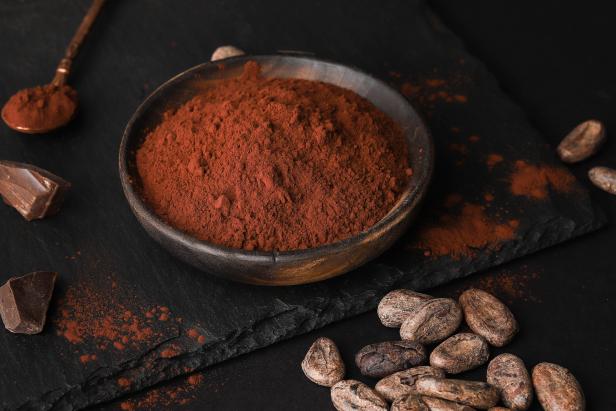
Tsvetomir Hristov/Getty Images
Cacao vs Cocoa: What’s the Difference?
When generally used, the terms cacao and cocoa are often used interchangeably to refer to the tree, bean or what is used to make chocolate. But Rogan says there is a lot of industry discussion about the terms and what makes cacao different from cocoa. “There is much nuance and history, and the bean is grown by and used in many different cultures around the world, which associate different meanings to the terms,” she says.
Cacao vs Cocoa: A History Lesson
To better understand some of the distinctions around the terms cacao and cocoa, Rogan offers a history lesson.
“Cacao originated in the Amazon basin, and its presence in indigenous culture is documented as early as 5300 BC. Cacao was integral in culture and used as a drink, currency, for religious purposes and to show off wealth, and it was referred to as “kakawatl.” When the Spanish came to the Americas, they changed the name to cacao and exported the beans to Europe for the elite to enjoy as a sweet drinking beverage.”
While Spanish-speaking cacao farmers in the Americas still call the tree, fruit and bean “cacao,” the same tree, fruit, bean and industry is referred to as “cocoa” in Africa. The crop was exported to Africa in the 1800s to increase production and meet the growing European chocolate market, which is likely when the term was Anglicized. The nuance of this distinction is explained well in the FCIA Chocolate Glossary.”
Cacao vs Cocoa on Labels
The U.S. Food and Drug Administration (FDA)’s regulations refer to cacao nibs as the food made by removing the shells from dried and cracked cacao beans; if the nibs are ground further, it creates a chocolate liquor. “At this point, you can process the chocolate liquor in different ways to produce different food products, many of which have the term “cocoa” in the descriptions,” Rogan says. “Because of this, many processed food products use “cocoa” terminology in their labeling. For this reason, some relate that “cacao” is used to describe the food prior to processing, while “cocoa” is used during and post-processing.”
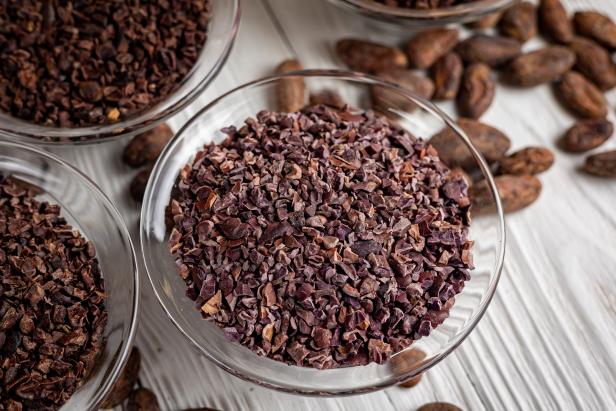
Boris Yatsenko/Getty Images
What Are Cacao Nibs?
Cacao nibs are the crushed seeds or beans of the cacao fruit. “Generally, cacao beans consist of about 50% fat (cocoa butter) and the remainder is proteins, nutrients, starches, minerals and water,” Rogan explains. “There are more than 600 different flavor compounds (odor-active) naturally present in cacao beans, which shows the vast flavor potential of cacao and chocolate.”
To make cacao nibs, Rogan and the Goodnow Farms Chocolate team hand sort cacao beans and remove defects, roast the beans for their specific origin profile, winnow the beans to break off and remove the outer shell/husk and collect the flavorful cacao nibs inside. “If we were making chocolate, we would continue our process and grind these nibs with sugar and our freshly-pressed cocoa butter in our melanguers,” Rogan says. “But you can also eat these crushed seeds as is with no sugar added and enjoy deep and rich flavors.”
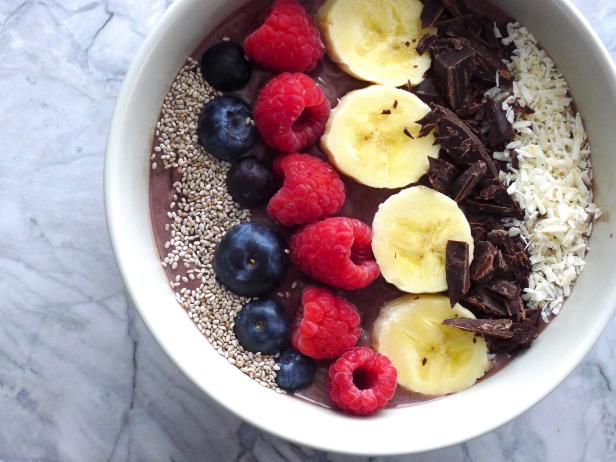
How to Cook Cacao
Cacao is often prepared as a hot drink and served as part of cacao ceremony, a celebratory ritual that is said to open the heart through cacao. To create an intense tea-like experience, Rogan recommends steeping cacao nibs in hot water.
Roasted cacao nibs add a cocoa-y hit to a variety of smoothie recipes, including this Hot Cocoa Smoothie or this Acai, Blackberry and Cacao Smoothie. Cacao nibs add a pop of crunch when used to garnish breakfast dishes such as oatmeal, yogurt or acai bowls, like these Gluten-Free Espresso Banana-Acai Bowls (pictured above). Try using cacao nibs as a less-sweet chocolate alternative for baked goods and healthy snacks, like these Almond, Coconut and Date Bites or these Super Food Protein Bars.
Besides sweet-leaning culinary applications, cacao plays well in savory recipes, too. Aarti Sequeira pits bitter, earthy cacao nibs against creamy cheese and jammy fruit in these party-ready Goat Cheese Crostini with Cacao Nibs and Fresh Figs, and employs cacao powder to add chocolatey depth to a tamarind-date chocolate chutney that accompanies her Cauliflower Chaat Salad. Yadi Garcia celebrates her Caribbean childhood and cacao as an ancestral ingredient to create a rich, not-too-sweet fudge sauce that accents these sweet, savory and salty Cinnamon Casabitos. For an unexpected yet winning addition to your grilling game, just add cacao nibs. Make our Cacao Nibs Rub and try it on tri-tip or skirt steak.
Related Links:
























